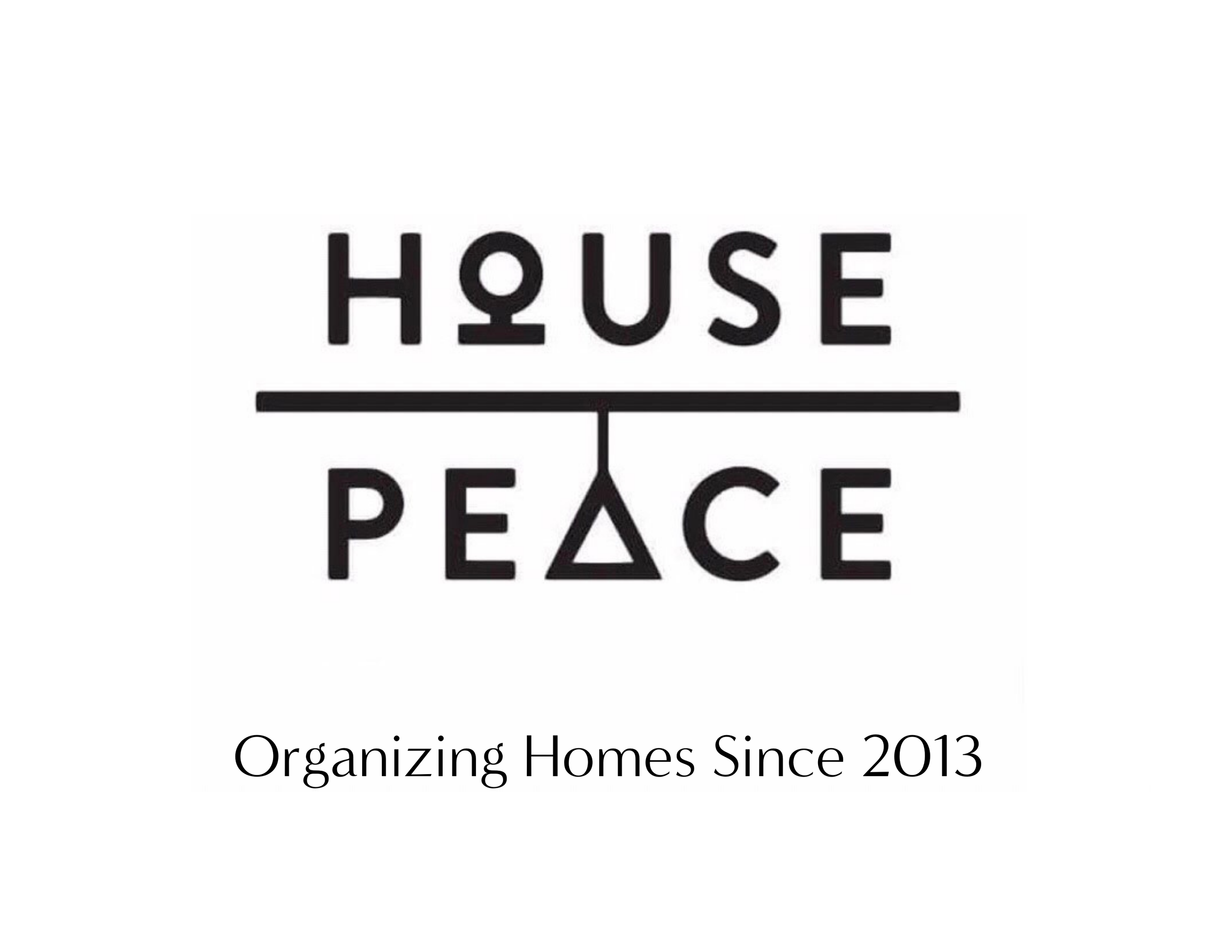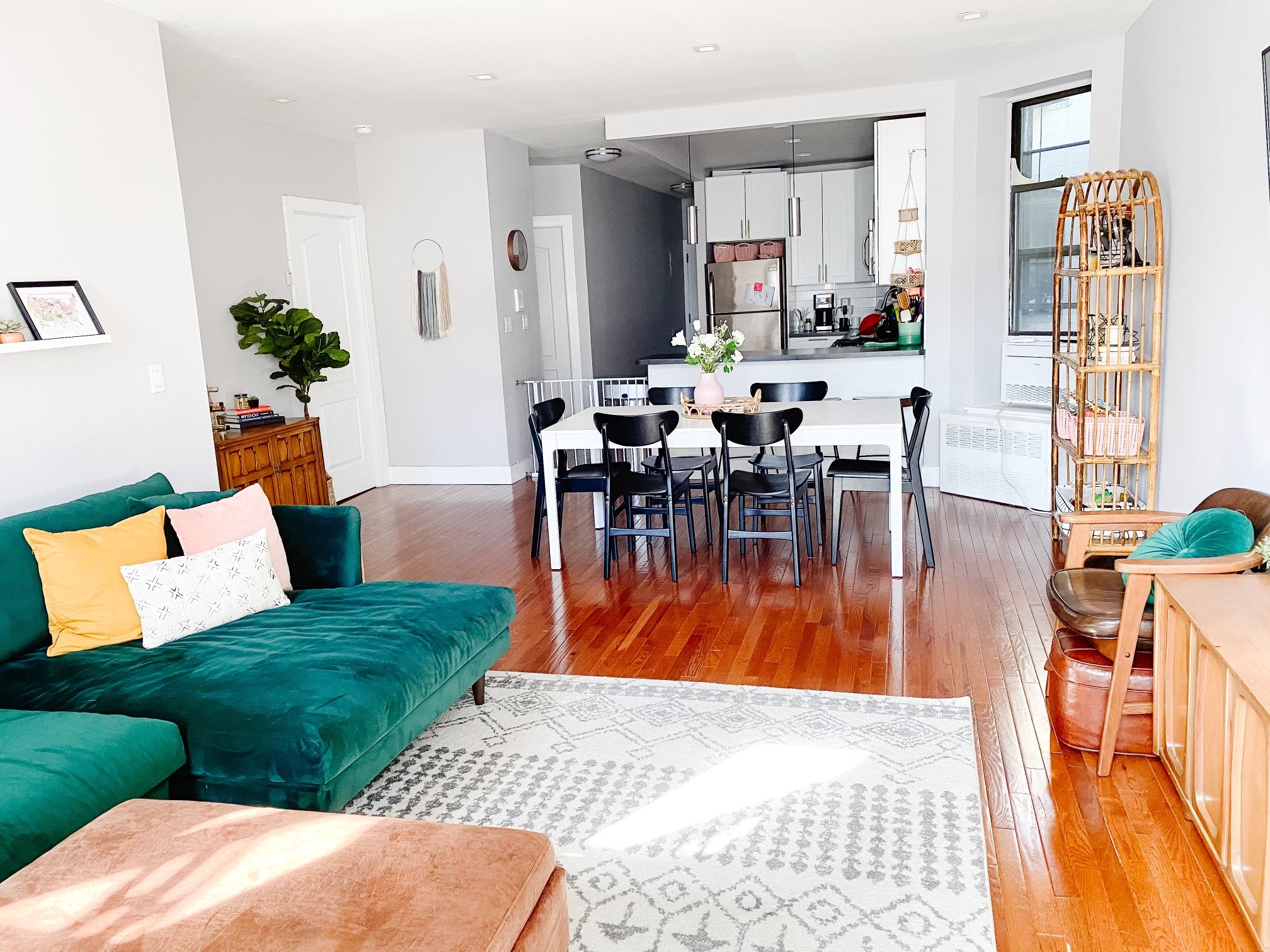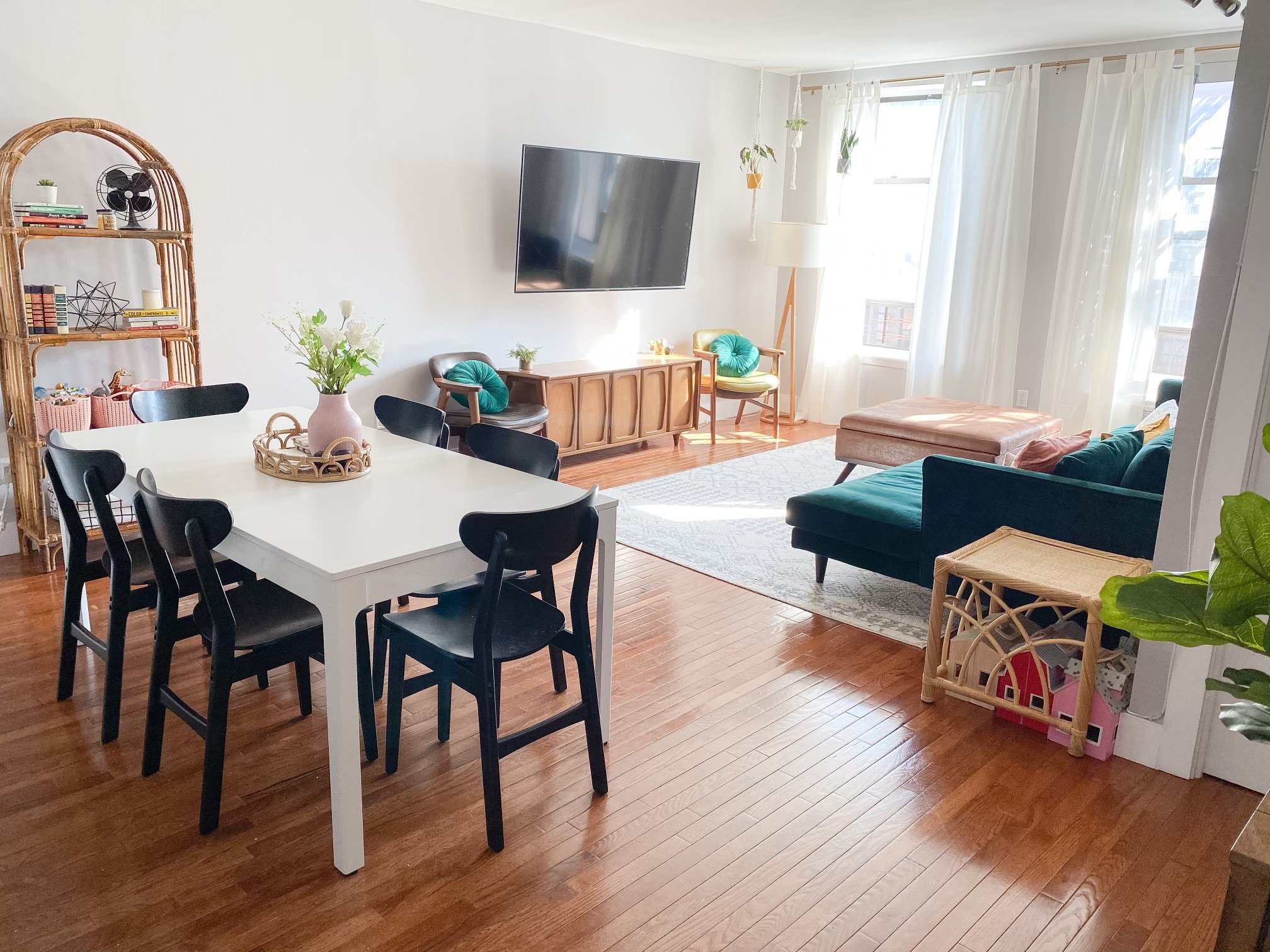Small Space Storage and Organization
Our first apartment in NYC. She was cute, but she was small.
We talk a lot here about minimizing your possessions in order to keep the peace. Having less stuff means there’s less stuff to find homes for, which inherently makes organization easier. But what happens when you’re already fairly minimalistic with your belongings, and it’s still hard because your space is just so dang small? This is the dilemma that myself and many of my friends here in New York City deal with regularly. As I think everyone is aware, space is limited in NYC and we New Yorkers have to figure out what to do with our things without luxuries like garages, attics, basements, and walk-in closets. So, what do we do?
I want to start with a bit of a confession: I have a big apartment. There, I said it. This is less of a struggle for me than for most of my city-dwelling peers because shortly after moving to the city, my family stumbled upon a large apartment which included an unfinished basement for storage. In New York standards, we are rich with space, however, when we originally moved to NYC, our first apartment was significantly smaller, and the home we were moving from was a spacious 3-floor home with attics, garages, and basements, oh my. I say all of that to give you a little context on my perspective. No, I don’t live in a matchbook-size apartment, however, I am still squeezing a family of 6 previously accustomed to suburban living into a (large) 2 bedroom apartment (did I bury the lede that all 4 of my kids share a room?). So, if you find yourself in smaller quarters than you’d prefer, or you’ll be prepping a child for a move into their own tiny apartment soon, here are some tips for making that small space work for you.
Use vertical space
We’ve said it here before. Vertical space is your best friend. There is untapped potential under your couch and bed, in your closet and kitchen cabinets, and even out in the open. One of the spaces we use to its capacity is the floor space under our beds. I love my under bed storage containers in my room for storing our guest sheets and towels, but they’re also great for out of season clothes or other items you don’t need to access regularly. Our kids’ bunk beds sit up higher off the ground, so we purchased as many of these rolling toy chests as we could fit underneath for them to store toys and stuffed animals.
Another area where space is often overlooked is inside closets and cabinets. It’s helpful to think of the floor or the base of a cabinet as the bottom shelf of what will become a stacking opportunity. In my closet, we use shoe shelves on the floor in order to stack our shoes nicely. Using the floor, it gives you 3 shelves, but they can also be stacked on top of each other if you have the ability to do that. I also like to use the stacking method inside of kitchen and bathroom cabinets with items like shelf helpers and stackable bins (perfect for organizing in an under-sink cabinet!).
Use hidden spaces
What are hidden spaces? Hidden might be a bit dramatic, but think of hidden spaces as locations that are easily overlooked or deemed nonfunctional. One example of this would be keeping pot lids or spices hanging on the inside of a cabinet door or on the side of the refrigerator. For years, instead of having a freestanding bookshelf, we kept our children’s books on a rack that hung on the inside of their bedroom door. Also, I’ve seen many people line their long apartment hallways with shoe cabinets to create a storage opportunity in an otherwise unused space (pro tip: you don’t have to just keep shoes in shoe cabinets).
Use functional decor
I like having a pretty space as much as the next gal, but sometimes my need for function can feel like it supersedes my desire for beauty. This is how I discovered functional decor, which is having products in your home that are beautiful but serve more than just the function of beauty. To incorporate functional decor in your home, you could add some floating shelves in your bathroom to house pretty lidded jars that contain cotton swabs and other bathroom back-stock that you don’t have room for in your cabinet. You could choose a storage ottoman instead of a coffee table to keep toys or extra blankets tucked away. Maybe your cookbook collection is pretty enough to be displayed in the dining room instead of taking up kitchen cabinet space. Look around your space and ask yourself if your functional item is pretty enough to become decor or if you can find a pretty storage solution that doubles as decor.
This photo from our first NYC apartment shows both using hidden spaces (the dollhouses tucked underneath hollow side tables) and functional decor like a pretty bookshelf to house decorations on high shelves and toys on lower shelves, an attractive TV stand for keeping games and toys, and a storage ottoman for our extra blankets.
Big or small, we hope these tips help bring a little more peace to your space. If you live in a small space and you’ve found a gem of a tip for storage and organization, I’d love to hear about it. Send us a DM on Instagram and tell us what works for you! Happy organizing!
— Colleen
PS. You can get to know me and my family a little more here!
*Affiliate links are included in this blog post, and as a consumer, you will not pay more or less by clicking on an affiliate link. A small percentage of sales by affiliate links go back to us as content creators, and help us provide you with resources such as this blog post.


